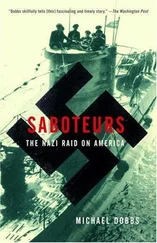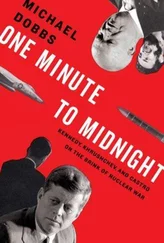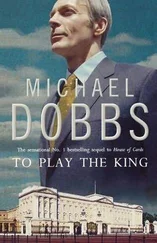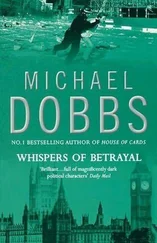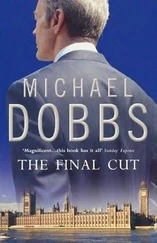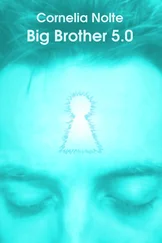The rhetorical confrontation between Moscow and Washington came against the background of a trial of strength over the deployment of American missiles in Western Europe. If the Kremlin could convince Western public opinion that Reagan was pushing the world to the brink of a nuclear confrontation, the battle was almost won. The Reagan administration, by contrast, wanted to portray itself as tough but reasonable. The Korean airliner affair represented a major public relations defeat for Andropov, from which he never really recovered. The deployment of American Pershing and Cruise missiles—the Western response to the earlier deployment of Soviet SS-20 missiles targeted on Western Europe—went ahead on schedule.
The Soviets lost the struggle for Western public opinion. But there was another, equally significant battle taking place—the battle for Reagan’s own mind—and here, ironically, Andropov had more success. The war psychosis in Moscow helped convince the president that it would be unwise to push the Soviets too far. A cornered enemy could react in an irrational way. Reagan was surprised to learn in late 1983 that “many people at the top of the Soviet hierarchy were genuinely afraid of America and Americans… as potential aggressors who might hurl nuclear weapons at them in a first strike.” 27He felt an obligation to dispel such ideas.
Reagan’s own horror of nuclear war was strengthened by watching a preview of the ABC television movie The Day After , which depicted the destruction of Lawrence, Kansas, in a nuclear exchange with the Soviet Union. Some administration officials were concerned that the movie could play into the hands of Soviet propagandists, but the commander in chief had a different reaction. “It’s powerfully done, all $7 million worth. It’s very effective and left me greatly depressed,” he noted in his diary. “We have to do all we can to have a deterrent and to see there is never a nuclear war.” 28
There would be no dramatic changes in superpower relations as long as Kremlin politics revolved around a hospital bed. The dying Andropov had indicated, in a note to the Politburo, that he wanted the young and energetic Gorbachev to be his successor. But his wishes were thwarted by a geriatric cabal that could not stomach the thought of a new generation’s taking over the leadership. When Andropov died in February 1984, the crown passed to the seventy-year-old Chernenko, himself mortally ill. Gorbachev’s hopes of becoming general secretary were dashed by the seventy-eight-year-old prime minister Nikolai Tikhonov. “Mikhail is still very young,” Tikhonov was overheard telling his associates. “It’s unclear how he would behave in such a position. Kostya is the one we need.” 29
The biological imperative could not be ignored forever, however. The age of the dinosaurs was nearly over.
THE KREMLIN
March 10, 1985
NIGHT HAD ALREADY FALLEN as the black Zils sped between St. Basil’s Cathedral and the executioner’s stand on the southern fringe of Red Square. As the limousines approached the fortified walls of the Kremlin, the traffic lights on the facade of the 205-foot-high Spassky Gate switched automatically from red to green. Dressed in knee-length boots and long winter overcoats, the guards snapped to attention, saluting their rulers. It seemed an unusual time for Politburo members to be gathering in the Kremlin—nearly 10:00 p.m. on a Sunday—but the guards had been trained never to question the habits of their secretive leaders.
Inside the Kremlin the Zils turned right in front of the Ivan the Great bell tower, completed by Boris Godunov in 1600, past the glittering cathedrals where the tsars had been crowned and buried for more than three hundred years. Then another right, past another set of guards and a pair of wrought-iron gates, halting outside a mustard-colored palace alongside the Kremlin wall. Shaped in the form of a triangle, this three-story building formed a kind of inner citadel, a kremlin within the Kremlin. In tsarist times it had housed the Senate and the Palace of Justice. After Lenin moved the capital back to Moscow from Petrograd in March 1918, the Senate building became the headquarters of the new regime. A red flag fluttered from its round copper roof, held aloft by a mechanical gust of air. Viewed from Red Square on the other side of the wall, the flag crowned a symbolic tableau of Soviet power, centered on Lenin’s tomb and flanked by the glittering red stars on top of the Spassky and Nikolai gates.
Nearly seven decades of Soviet history had been concentrated in this building. It was here that Lenin had ordered the murder of the tsar and his family, here that Stalin had organized the purges of his political opponents and run the military campaign against the Nazi invader, here that the monster Beria had been arrested by his frightened Politburo colleagues. Even the granite steps over which Stalin’s heirs now entered the building bore their own legend. To be summoned “to the steps,” in the language of the party nomenklatura, meant to be granted an audience with Stalin himself. 30As they mounted the steps, the dictator’s intimidated subordinates often had no idea what to expect. An angry glance could be a prelude to promotion. A smile could mean death. It all depended on a tyrant’s whim.
But times had changed, and on this occasion Soviet leaders had all been expecting a summons “to the steps.” Konstantin Chernenko, the lackluster bureaucrat who succeeded Andropov as gensek , had been battling lung disease and pneumonia for weeks. At 7:20 that evening he had finally died, at the age of seventy-three. For the third time in just over three years it was necessary to choose a new tsar.
The Politburo members took the elevator to the third floor of the Senate building, where the general secretary had his office. Stepping out of the elevator, they found themselves in a long, high-ceilinged corridor, with an immaculate red runner down the middle and doors on either side. Which door they entered depended on their seniority. Voting members traditionally gathered in a walnut-paneled room, next to the gensek ’s office. Candidate, or nonvoting, members met with Central Committee secretaries in a more modest room, nicknamed the predbannik , Russian for the dressing room of a bathhouse. When the appointed time came, the two groups met together in the Politburo Room, shaking hands like two rival football teams before the big match. The purpose of this unwritten Kremlin tradition was to allow the gensek to consult with the most senior Soviet leaders before the start of the meeting. Key decisions were often taken in the Walnut Room, without any note takers present, and ratified in the Politburo Room. 31
As he waited to greet his fellow Politburo members that Sunday evening, Mikhail Gorbachev was still a few steps away from supreme power. He had been chairing sessions in Chernenko’s absence, but he knew that some members of the old guard were counting on one of their own, Viktor Grishin, to block his rise to the top. As the Moscow Communist Party boss the seventy-one-year-old Grishin had gained a reputation for both inefficiency and corruption. A few weeks earlier he had attempted to project himself as Chernenko’s heir apparent by helping the dying leader cast his vote on nationwide television. Prime Minister Tikhonov was also maneuvering behind the scenes to block Gorbachev’s candidature. But rank-and-file members of the Central Committee were solidly for Gorbachev. After thirteen months of Chernenko both the party and the country wanted a change.
The key figure in the succession was Andrei Gromyko, the veteran foreign minister, who had served every Soviet leader since Stalin. Now that Ustinov was dead, there was no one in the Politburo who could match Gromyko’s prestige and authority. He had been around for as long as anyone could remember, having joined the Communist Party in 1931, the year of Gorbachev’s birth. He had had his differences with Gorbachev in the past and was irritated by the rave notices that Gorbachev had received in the Western press, following a triumphant tour of Britain in December 1984. At the same time, he had made a realistic assessment of the balance of political forces. His own son, Anatoly, was a strong Gorbachev supporter. By anointing Gorbachev, he would cement his own position as the Soviet Union’s elder statesman.
Читать дальше

